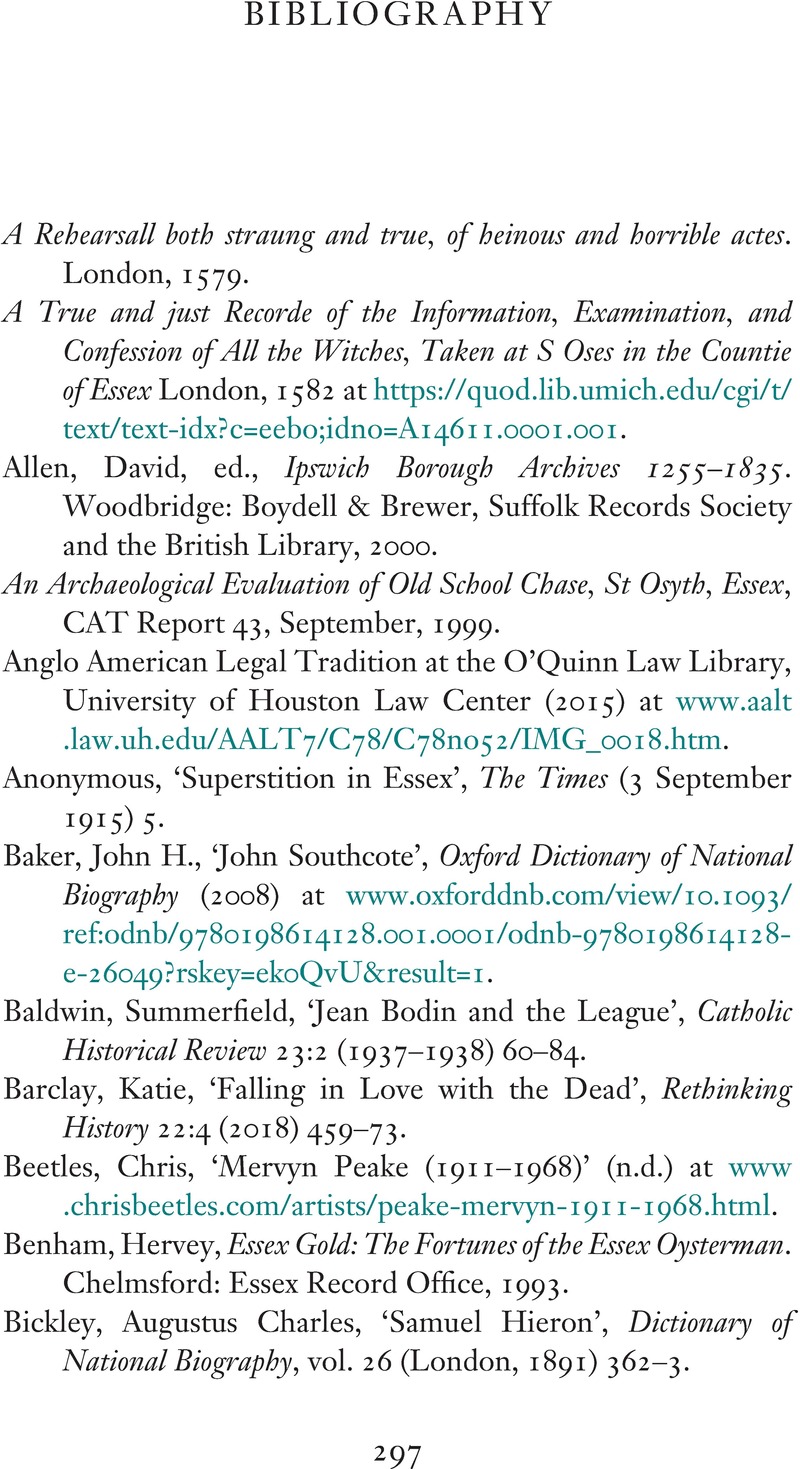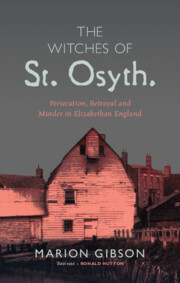Book contents
- The Witches of St Osyth
- Reviews
- The Witches of St Osyth
- Copyright page
- Contents
- Figures
- Acknowledgements
- Who’s Who
- Maps
- Abbreviations
- Introduction
- 1 St Osyth
- 2 The Darcy Lands
- 3 Little Clacton
- 4 The Sokens
- 5 Little Oakley and Beaumont cum Moze
- 6 An Untrue and Unjust Record
- Conclusion
- Bibliography
- Index
- References
Bibliography
Published online by Cambridge University Press: 02 December 2022
- The Witches of St Osyth
- Reviews
- The Witches of St Osyth
- Copyright page
- Contents
- Figures
- Acknowledgements
- Who’s Who
- Maps
- Abbreviations
- Introduction
- 1 St Osyth
- 2 The Darcy Lands
- 3 Little Clacton
- 4 The Sokens
- 5 Little Oakley and Beaumont cum Moze
- 6 An Untrue and Unjust Record
- Conclusion
- Bibliography
- Index
- References
Summary

- Type
- Chapter
- Information
- The Witches of St Osyth , pp. 297 - 310Publisher: Cambridge University PressPrint publication year: 2022



